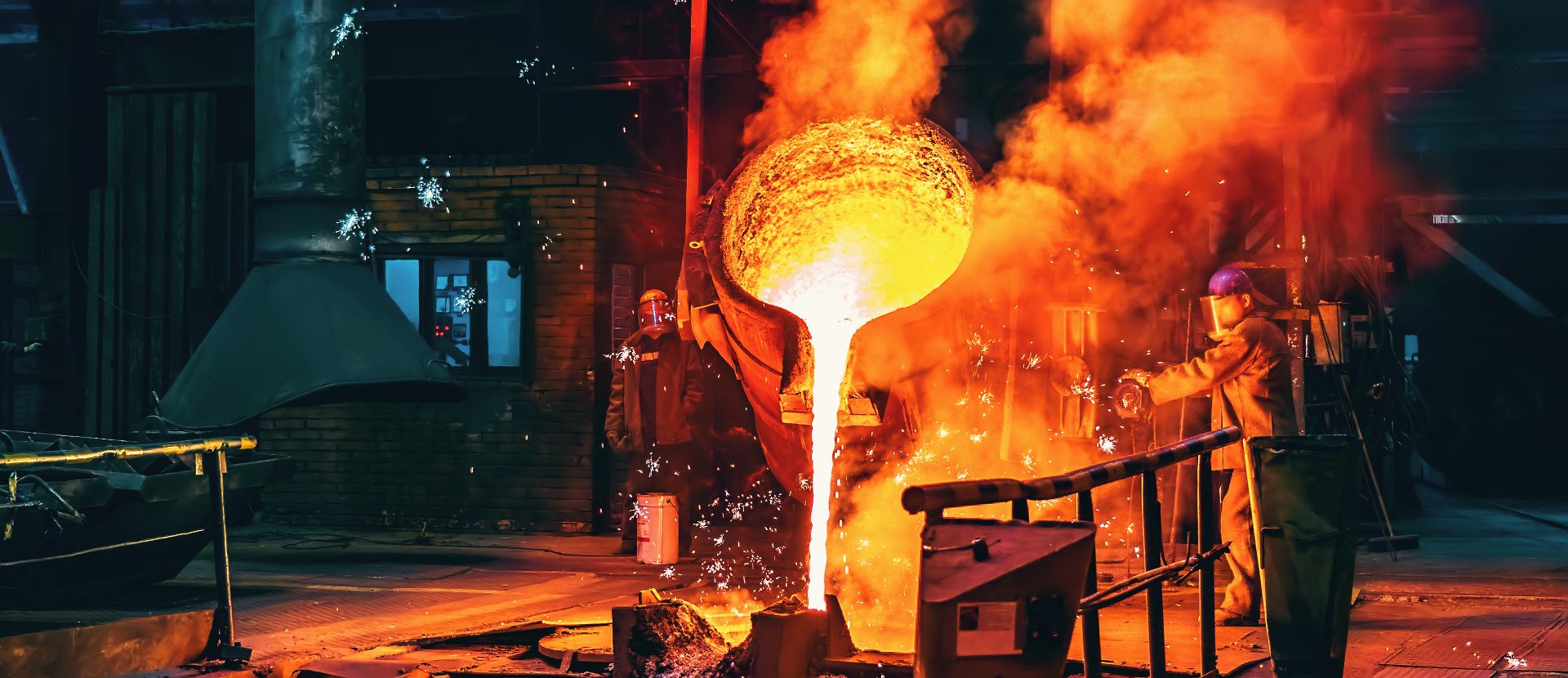

Slag Analysis
Near Real-Time Slag Analysis with X-Ray Fluorescence (XRF)
The analysis of slag, the complex mineral mixture formed during iron and steel processing, can be used to determine how efficiently the steelmaking process is running and to predict the quality of the steel being produced. In-process slag monitoring allows for the real-time optimization of the steelmaking process - helping increase efficiency and ensuring a higher-quality end product. Bruker provides a portable XRF-based solution for near real-time slag monitoring.
What is Slag?
Slag is a complex silicate mixture of aluminum, calcium and magnesium with small amounts of manganese, iron oxides and calcium sulfide. This mixture forms during different stages of iron and steel processing including in the blast furnace, the converter, the basic oxygen furnace (BAF) and the electric arc furnace (EAF).
In the blast furnace, for example, impurities in iron ores (the gangue), the flux and the coke ash react together to form slag. The slag then reacts with the molten iron that is being smelted, where it removes impurities whilst leaving desired elements in the melt - helping result in a purer steel or alloy product.
The monitoring of slag composition during the steelmaking process serves as an effective health check and is a critical step for process optimization. Real-time slag composition monitoring provides steelmakers with advantages such as efficient slag formation and with it, lower material and energy costs, as well as higher quality steel or alloy products.
X-Ray Fluorescence (XRF) for Slag Analysis
XRF analysis is a widely used technique for the elemental analysis of materials, including steel slag. XRF measures the signals emitted from the elements in a sample following their exposure to X-ray radiation. These signals are unique for each element, meaning the XRF device can determine which elements are present in steel slag and in which quantity.
XRF is an ideal method for process optimization in the steelmaking process. Aside from being cheap and effective, XRF measurements can be made quickly and accurately by non-experts.
The balance of oxides such as silica (SiO2), calcium oxide (CaO), aluminum oxide (Al2O3), and iron oxide (FeO) in steel slag is essential for the process efficiency and service life of the furnace refractory lining. With the use of an XRF measuring device steelmakers can ensure the correct balance of these oxides via frequent analysis and raw material additions as and when required during production.
CTX - Portable XRF Spectrometer
The CTX portable benchtop spectrometer uses XRF to detect and quantify a broad spectrum of elements from as light as magnesium (Mg) to as heavy as uranium (U). The analyzer is ideal for the rapid non-destructive analysis of small samples of solids, powders and liquids. Wherever fast and accurate testing is required, the CTX provides accurate and reproducible results quickly and easily.
In addition, the CTX portable benchtop XRF analyzer is a rugged instrument meaning it can be used in dusty and harsh environments such as steelworks production areas. The splash-proof stainless steel housing is durable and easy to clean.
Slag Analysis using the CTX
The CTX can detect a wide range of oxide-forming elements in slag, including silicon, aluminum, magnesium, calcium, iron, and many others.
The analytical accuracy of the CTX is typically comparable to traditional analytical methods, which are often time-consuming, expensive, and require lengthy sample preparation. The CTX provides the required accuracy for steel slag analysis in just a fraction of the time.
The portability of the CTX means slag analysis can be carried out on-site reducing sample transport and laboratory time. The CTX portable XRF analyzer can be used close to the furnace to measure slag, allowing the quick adjustment of charging conditions in near real time.
When using portable XRF for slag monitoring, sample preparation is important to ensure high quality results. For quick results at the furnace, a coarse crush analyzed with an averaging function can provide useful results. For higher quality results, the slag can be ground to a fine powder to ensure homogeneity.
Benefits of portable XRF for slag analysis:
- Fast, almost real-time results for key slag elements and compounds
- Increased efficiency and productivity, reduced laboratory costs
- Analysis of raw materials such as iron ore, scrap metal and limestone
- Analysis of finished products and ferroalloys
In conclusion, Bruker’s CTX is a powerful slag analysis tool that can increase steelmaking productivity and end product quality through rapid analysis. Its ability to provide accurate, real-time results close to the furnace opens up new opportunities to make the steelmaking process more efficient.